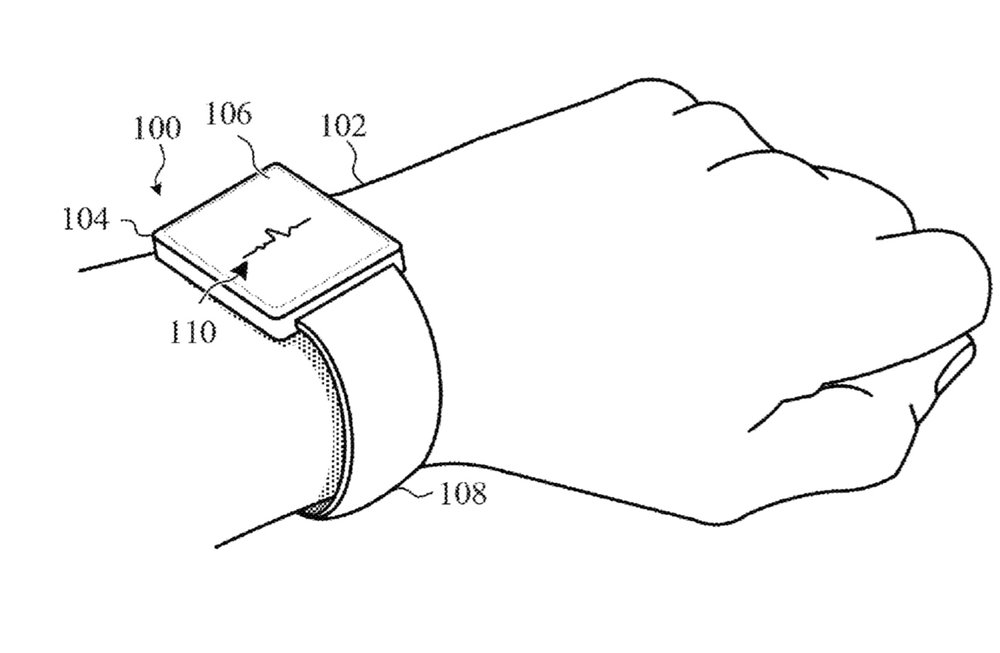Apple has been granted a patent (number 20180027931) for “dynamic fit adjustment for wearable electronic devices.” It refers to current, and future, versions of its Apple Watch bands.
In the patent filing, Apple notes that, in many cases, watch bands may have limited fit adjustment increments available. For example, some bands have an incrementally user-adjustable size (e.g., a buckling clasp, pin and eyelet, etc.) whereas other bands have a substantially fixed size, adjustable only with specialized tools and/or expertise (e.g., folding clasp, deployment clasp, snap-fit clasp, etc.). Still other bands may be elasticated expansion-type bands that stretch to fit around a user’s wrist.

In other cases, Apple says conventional watch bands may catch, pinch, or pull a user’s hair or skin during use if the band is overly tight. Watch bands may also slide along a user’s wrist, turn about a user’s wrist, or may be otherwise uncomfortable or bothersome to a user if the band is overly loose. These problems can be exacerbated during periods of heightened activity, such as while running or playing sports.
What’s more, adjusting the size or fit of conventional watch bands often requires multiple steps, specialized tools, and/or technical expertise. In other cases, sizing options available to a user may be insufficient to obtain a proper fit. In still further examples, the fit may be different and/or may be perceived to be different given certain environmental (e.g. temperature, humidity) or biological conditions (e.g., sweat, inflammation).
As a result, users of conventional wristwatches and/or fitness/health tracking devices may select a tolerable (although not optimally comfortable) fit, reserving tight bands for fitness/health tracking devices and loose bands for conventional wristwatches. Apple says that this means there’s a need for systems and methods for dynamic adjustment of the fit of wearable electronic devices.
Here’s Apple’s summary of the invention: “Systems and methods for dynamically adjusting the fit of a wearable electronic device are disclosed. In many embodiments, a tensioner associated with a wearable electronic device can control one or more actuators that are mechanically coupled to either the housing or to a band attached to the wearable electronic device. In one example, in response to a signal to increase the tightness of the band, the tensioner can cause the actuator(s) to increase the tension within the band.”
Of course, Apple files for — and is granted — lots of patents by the U.S. Patent & Trademark Office. Many are for inventions that never see the light of day. However, you never can tell which ones will materialize in a real product.
